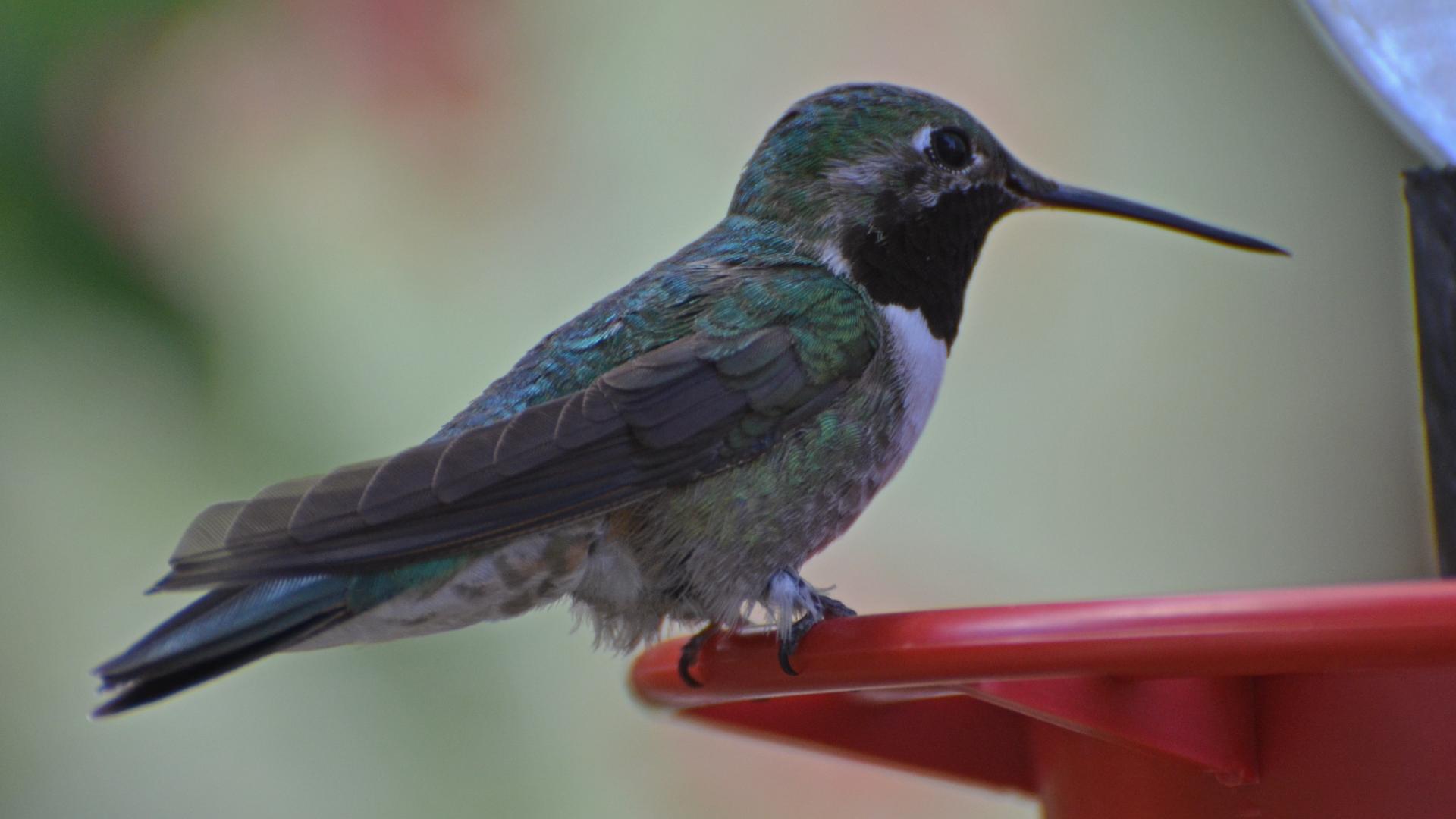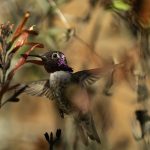The black-chinned hummingbird (Archilochus alexandri) is a stunning avian marvel found across various habitats, notably in Arizona. Known for its distinctive black chin and iridescent purple gorget, this bird captivates both casual observers and avid bird watchers.
Facts About the Bird
- Scientific Name: Archilochus alexandri
- Common Name: Black-chinned Hummingbird
- Conservation Status: Least Concern
Subspecies Details
This species occasionally hybridizes with other hummingbirds like Anna’s, Lucifer’s, broad-tailed, and Costa’s hummingbirds.
Size – Weight and Length
- Length: 8.25 cm (3.25 inches)
- Weight: Approximately 3-4 grams
Appearance and Features
Male black-chinned hummingbirds have a black face and chin with a glossy purple gorget and a dark forked tail. Females sport a dark rounded tail with white tips but lack the throat patch seen in males. Juveniles resemble females but may show buff margins on their dorsal feathers.
Where the Bird Lives
Black-chinned hummingbirds are widespread in the western United States, including Arizona. They reach as far north as Canada during summer and migrate to Mexico for winter.
Habitat – The Kind of Landscape the Bird Lives In
These birds thrive in diverse environments such as mountains, woodlands, orchards, meadows, chaparral habitats, shaded canyons, and riparian woods near water sources like rivers or streams.
Diet and Eating Habits
Feeding primarily on nectar from flowers using their long extendable tongues, they also catch insects mid-air for protein intake, aiding plant pollination while feeding!
Migration Habits
Migratory patterns see them traveling southward into Mexico during winter months, returning by early springtime.
Conservation Status And Threats
Listed under Least Concern by IUCN due to stable population trends without significant decline observed globally so far! However, potential threats include habitat loss affecting natural living spaces, requiring ongoing monitoring efforts to ensure continued survival success rates among these beautiful creatures!


